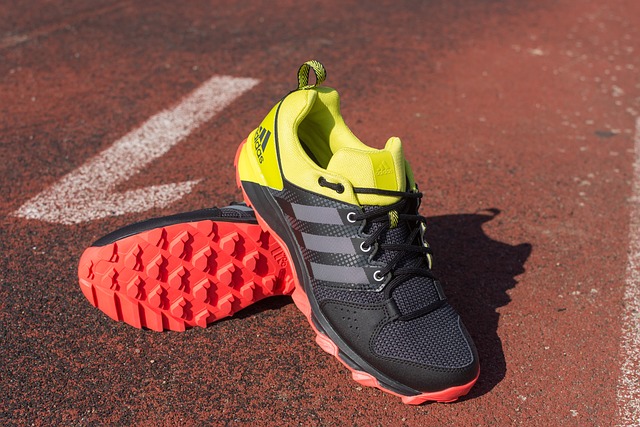Track spikes are lightweight and designed for speed on flat, smooth surfaces. Cross country spikes have more traction for varied terrain and longer distances.
TL;DR Track spikes Vs. Cross country spikes
Track spikes are specifically engineered to maximize speed and traction on the smooth surface of a track. They feature sharp metal or ceramic spikes that dig into the synthetic track surface, providing enhanced grip and propulsion. These spikes are typically shorter in length to optimize sprinting performance.
Cross country spikes are designed with endurance in mind. They have longer and more aggressive studs or rubber lugs that offer superior traction on varied terrains such as grass, dirt trails, or muddy paths. Cross country shoes also tend to have more cushioning and support to withstand the demands of off-road running.
Track Spikes

Track spikes are specialized athletic shoes designed for track and field events. They feature lightweight construction, minimal cushioning, and sharp, pointed spikes on the sole to maximize traction on the track surface.
These spikes vary in length and configuration based on the specific event, such as sprints, middle-distance, or long-distance races.
Track spikes aim to enhance an athlete’s speed, agility, and grip on the track, providing the necessary support for explosive movements. Athletes often choose different spike types based on their event and personal preferences, optimizing performance in competitive track and field competitions.
Cross Country Spikes
Cross country spikes are specialized running shoes designed for off-road terrain, particularly in cross country races.
They feature a more rugged and durable design compared to track spikes, with sturdier outsoles equipped with longer and more aggressive spikes. The spikes provide enhanced traction on various surfaces, including grass, dirt, and mud, enabling runners to navigate challenging terrains during cross country courses.
Cross country spikes prioritize durability, comfort, and grip to support athletes during longer distances and diverse environmental conditions, ensuring optimal performance in the unique challenges presented by cross country running.
Track spikes Vs. Cross country spikes – Key differences
| Criteria | Track Spikes | Cross Country Spikes |
|---|---|---|
| Terrain Type | Flat, smooth tracks | Varied, off-road terrain like grass and mud |
| Spike Configuration | Shorter, sharp spikes for grip on track surface | Longer and more aggressive spikes for varied terrain |
| Weight | Lightweight | Slightly heavier for durability and stability |
| Cushioning | Minimal cushioning | May have additional cushioning for comfort |
| Durability | Emphasis on lightness, less durability | Built with durability to withstand diverse conditions |
| Design | Sleek, minimal design | Sturdier construction for off-road conditions |
| Use in Races | Primarily used in track and field competitions | Specifically designed for cross country races |
| Event Specialization | Tailored for specific track events | Versatile for longer distances and varied terrains |
| Grip on Track | Maximum grip on smooth track surfaces | Designed for optimal traction on challenging surfaces |
| Common Distances | Suitable for sprints, middle, and some long-distance events | Used in longer cross country races |
| Typical Spikes Length | Shorter spikes, event-specific lengths | Longer spikes, adapted to varying ground conditions |
| Ankle Support | May offer minimal ankle support | Designed to provide additional ankle support |
| Multi-Surface Versatility | Less versatile on uneven surfaces | Specifically crafted for cross country courses |
| Training Use | Less suitable for training on rough terrain | May be used for training on a variety of surfaces |
Choosing the Right Spike for Your Sport
Choosing the right spike for your sport is crucial for optimal performance and comfort. Here are considerations for track and cross country spikes:
Track Spikes:
- Event Specificity: Select spikes based on your track event—sprints, middle-distance, or long-distance races have different spike requirements.
- Spike Length: Shorter spikes (3-6mm) are suitable for sprints, while longer spikes (6-9mm) are used for middle and long-distance events.
- Surface Type: Choose spikes suitable for the track surface—pyramid spikes for synthetic tracks and needle spikes for softer, natural tracks.
Cross Country Spikes:
- Terrain Compatibility: Opt for cross country spikes designed for varied terrains, featuring longer and more aggressive spikes for traction on grass, dirt, and mud.
- Comfort and Durability: Consider spikes with additional cushioning and sturdier construction to handle the demands of off-road running.
- Ankle Support: If you require ankle support, choose spikes that provide additional stability, especially for uneven surfaces.
- Versatility: Cross country spikes should be versatile enough to handle longer distances and diverse environmental conditions.
Ultimately, try on different spikes, consider your specific needs, and test them during practice to ensure a proper fit and performance for your chosen sport.
Image Credits
Featured Image By – metaliza01 from Pixabay
Image 1 By – Pixabay








